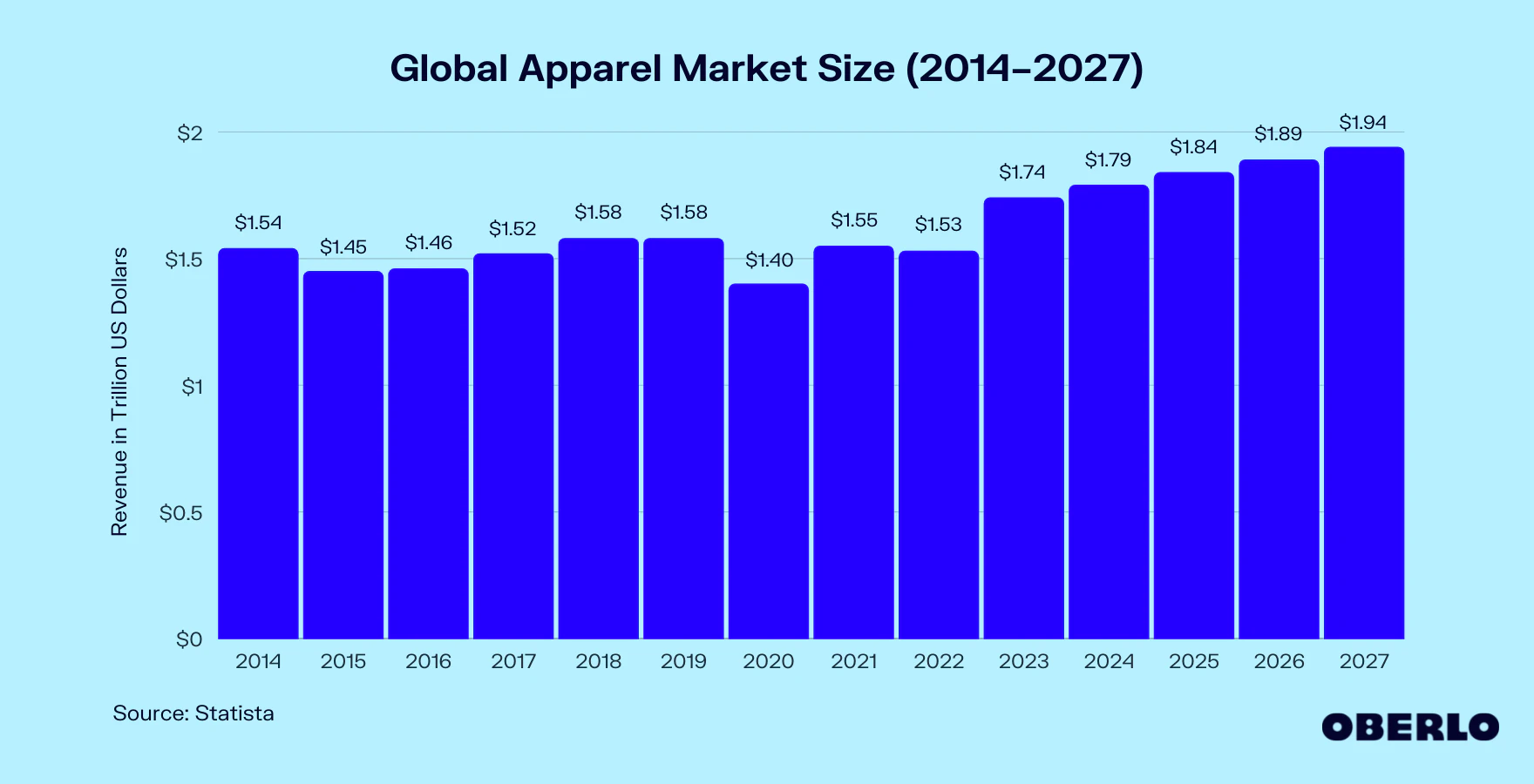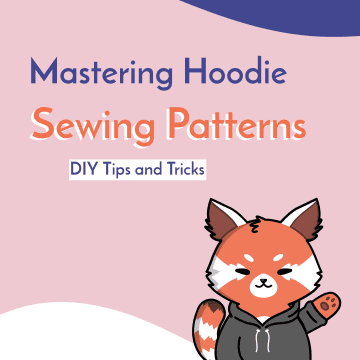- You have no items in your shopping cart
- Continue Shopping

The bottom line for a fashion company is an essential factor that determines its success. It is the net income or profit that the company earns after deducting all its expenses. The fashion industry is highly competitive, and companies need to keep a close eye on their bottom lines to stay afloat.
One of the critical factors that affect the bottom line for a fashion company is the cost of production. The cost of materials, labor, and overhead expenses can significantly impact the profit margins. Companies need to find ways to reduce costs without compromising on the quality of their products. They can achieve this by sourcing materials from cheaper suppliers, optimizing their production processes, and reducing waste.
Another way for fashion companies to improve their bottom lines is by increasing their sales. They can achieve this by expanding their product lines, targeting new markets, and improving their marketing strategies. Companies can also leverage technology to reach a broader audience and improve their online presence. By focusing on these key areas, fashion companies can improve their bottom lines and stay ahead of the competition.
Understanding the Fashion Industry
The fashion industry is a complex and ever-changing landscape that encompasses a wide range of markets, from haute couture to fast fashion. In this section, we will explore some of the key trends and factors that shape the industry, including market trends, consumer behavior, and the competitive landscape.
Market Trends
The fashion industry is subject to a variety of market trends that can have a significant impact on the bottom line of a fashion company. One of the most significant trends in recent years has been the rise of fast fashion, which has disrupted the traditional fashion cycle by offering consumers trendy and affordable clothing at a rapid pace. This trend has been fueled by advances in technology and logistics, which have made it easier and cheaper to produce and distribute clothing on a large scale.
Another trend that has emerged in recent years is the growing demand for sustainable and ethical fashion. Consumers are increasingly concerned about the environmental and social impact of the fashion industry and are looking for ways to make more responsible choices. This trend has led to the rise of eco-friendly and ethical fashion brands, as well as a growing interest in upcycling, recycling, and circular fashion.
Consumer Behavior
Understanding consumer behavior is essential for any fashion company looking to succeed in the industry. Consumers are increasingly looking for personalized and unique experiences, and they are willing to pay a premium for products that meet their specific needs and preferences. This trend has led to the rise of customization and personalization in the fashion industry, as well as a growing interest in niche and independent brands.
Another key trend in consumer behavior is the shift towards online shopping. E-commerce has become an essential channel for fashion companies, as more and more consumers prefer to shop online for convenience and accessibility. This trend has also led to the rise of social media and influencer marketing, which have become powerful tools for building brand awareness and engaging with consumers.
Competitive Landscape
The fashion industry is highly competitive, with a wide range of players vying for market share. In addition to traditional fashion brands, there are also a growing number of disruptors and innovators entering the market, such as subscription services, rental platforms, and resale marketplaces. This trend has led to increased competition and pressure on traditional fashion companies to innovate and adapt to changing consumer preferences.
One of the most significant challenges facing fashion companies is the need to balance profitability with sustainability and ethical considerations. As consumers become more aware of the environmental and social impact of the fashion industry, they are increasingly demanding that companies take responsibility for their actions. This trend has led to a growing focus on sustainability and ethical practices, as well as a need for transparency and accountability in the industry.
Overall, the fashion industry is a dynamic and complex landscape that requires companies to stay on top of market trends, understand consumer behavior, and navigate a highly competitive landscape. By staying informed and adapting to changing conditions, fashion companies can position themselves for success in this exciting and challenging industry.
Financial Analysis and Effective Financial Management for Fashion Companies
Financial success in the fashion industry requires a two-pronged approach: a deep understanding of financial metrics and the practical application of sound financial management principles. In this section, we’ll explore the critical aspects of financial analysis, laying the foundation for effective financial management.
Financial Analysis

Revenue Streams
A fashion company’s revenue streams are the lifeblood of its business. While the primary source of income is the sale of products, diversifying revenue streams can bolster financial stability. Consider these options:
- Licensing fees: Generate income by licensing your designs or brand to others.
- Collaborations: Partner with other brands or designers to tap into new markets.
- Sponsorships and partnerships: Collaborate with influencers or celebrities to promote your brand.
- Retail space and pop-up shops: Renting retail space or hosting pop-up shops can create additional income.
Diversifying revenue streams is a fundamental component of financial analysis, ensuring a resilient financial foundation.
Cost Structure
Understanding a fashion company’s cost structure is essential for informed decision-making. It includes:
- Cost of goods sold (COGS): Encompassing materials, labor, and manufacturing expenses.
- Operating expenses: Covering salaries, rent, utilities, marketing expenses, and overhead costs.
- Taxes and fees: Including taxes, customs fees, and regulatory expenses.
Analyzing the cost structure empowers a fashion company to determine its break-even point and make informed decisions about pricing and profitability.
Profit Margins
Profit margins, expressed as a percentage, reflect the financial health of a fashion company. A low profit margin may indicate insufficient revenue to cover expenses, while a high margin suggests operational efficiency. Strategies for improving profit margins include:
- Increasing revenue: Through effective marketing, sales efforts, and new product launches.
- Cost reduction: Achieved by optimizing the supply chain, implementing cost-cutting measures, and outsourcing non-core functions.
- Operational efficiency: Automation and process improvements can enhance efficiency and profitability.
By analyzing profit margins, a fashion company can identify areas for improvement and make informed decisions about pricing, cost-cutting, and growth strategies.
Financial Management
Financial management is essential for any business, but it is especially important for fashion companies. Fashion companies face a number of unique challenges, such as high inventory costs, seasonal demand fluctuations, and rapid changes in fashion trends. To be successful, fashion companies need to carefully manage their finances and track their key financial metrics.
The following table shows the average financial metrics for fashion companies by industry:
| Metric | Fashion Industry | Luxury Fashion | Fast Fashion |
|---|---|---|---|
| Average Inventory Turnover | 5.2 times/year | 3.8 times/year | 8.6 times/year |
| Cost of Goods Sold (COGS) | 60% of revenue | 45% of revenue | 70% of revenue |
| Gross Profit Margin | 40% | 55% | 30% |
| Operating Expenses Ratio | 20% | 15% | 25% |
| Net Profit Margin | 15% | 20% | 10% |
| Return on Assets (ROA) | 12% | 18% | 8% |
With a comprehensive understanding of financial analysis, we now turn our attention to the practical side of financial management, where we provide specific tips and strategies for effective financial control and growth.
Cash Flow Management
Effectively managing cash flow is crucial. Implement cash flow forecasting and closely monitor income and expenses. Negotiating extended payment terms with suppliers can align payment schedules with cash flow cycles, providing financial flexibility.
Cost Control
Cost control involves identifying cost centers, conducting regular cost-benefit analyses, and implementing cost-cutting measures. For example, reducing packaging waste not only lowers material costs but also aligns with sustainability goals, appealing to eco-conscious consumers.
Inventory Reduction
Optimizing inventory levels is essential. Utilize data analytics and demand forecasting to ensure you maintain the right products in stock. Excess inventory ties up capital and storage space, while insufficient inventory can result in lost sales opportunities.
By integrating effective financial analysis and management practices, fashion companies can ensure financial stability, identify growth opportunities, and navigate economic challenges effectively. These financial strategies are integral to achieving long-term success in the dynamic fashion industry.
Cost Reduction
In the competitive landscape of the fashion industry, achieving cost efficiency while maintaining product quality is paramount. Fashion companies constantly seek ways to optimize their operations and reduce expenses without compromising on their creative vision. In this section, we explore strategies like outsourcing, technology adoption, and innovative material sourcing to help fashion companies manage costs effectively and enhance their profitability.
Outsourcing Non-Core Functions: Fashion companies have the option to delegate non-essential tasks, such as customer support, warehousing, or logistics, to specialized service providers. This strategic move allows them to allocate their resources and expertise primarily to core competencies like design and marketing.
Technology Investment: Fashion companies can bolster their cost-reduction efforts by investing in cutting-edge technology. This includes implementing advanced inventory management systems, embracing automated production processes (e.g., utilizing AI and robotics), and harnessing the power of data analytics for precise demand forecasting.
Innovative Material Sourcing: Exploring innovative material sourcing avenues is essential for fashion companies seeking cost efficiencies and sustainability. They can consider eco-friendly alternatives, like bio-fabricated textiles or sustainable materials, aligning with the ongoing sustainability trends in the industry.
Marketing and Branding Strategies
Successful marketing and branding strategies are essential for any fashion company looking to increase their bottom line. Here are some key areas to focus on:
Brand Identity
Developing a strong brand identity is crucial for any fashion company. This includes creating a unique brand concept and strategy that sets the company apart from competitors. Conducting market research can help identify consumer trends and demands, and developing customer personas can help understand the target audience. Once the brand identity is established, it should be consistently reflected in all aspects of the company, including the logo, packaging, and product design.
Advertising and Promotion

Effective advertising and promotion are key to increasing brand awareness and driving sales. Traditional advertising methods such as print ads, billboards, and television commercials can be effective, but digital marketing has become increasingly important. Social media platforms like Instagram and Facebook provide a cost-effective way to reach a large audience and engage with customers. Influencer marketing can also be a powerful tool, as it allows brands to reach a targeted audience through trusted sources.
Digital Marketing
Digital marketing is an essential part of any fashion company’s marketing strategy. This includes search engine optimization (SEO) to improve website visibility and drive traffic, as well as email marketing to reach customers directly. Social media marketing is also important, as it allows companies to engage with customers and build brand loyalty. E-commerce is another important aspect of digital marketing, as it allows customers to purchase products directly from the company’s website.
In conclusion, developing a strong brand identity, effective advertising and promotion, and a comprehensive digital marketing strategy are all essential for any fashion company looking to increase their bottom line. By focusing on these key areas, companies can build brand awareness, engage with customers, and drive sales.
Fashion Business Strategies:
Niche Market Focus
Fashion companies can enhance their bottom line by identifying and catering to niche markets. For example, a brand could specialize in producing vintage-inspired clothing for a particular era, catering to a dedicated group of customers seeking a unique style.According to a study by McKinsey, companies that focus on a niche market typically have higher profit margins than companies that do not.
Product Differentiation
Differentiation can be achieved through innovative product design and materials. For instance, a sustainable fashion company may differentiate itself by using recycled or upcycled materials, emphasizing its commitment to eco-friendly practices.
Brand Identity
Building a strong brand identity involves more than just consistent visual elements. A fashion company can craft a compelling brand story that resonates with its target audience, making customers feel emotionally connected to the brand. For instance, a brand might highlight its ethical manufacturing processes and fair labor practices to build a reputation for social responsibility.
Market Expansion
Expanding into new markets can involve strategies like online marketplaces, international partnerships, or opening brick-and-mortar stores in strategic locations. A fashion company can consider entering emerging markets with growing consumer demand for fashion products.
Supply Chain Management
Managing a fashion company’s supply chain is a complex and critical task that involves multiple stages, from sourcing raw materials to distributing finished products to retail stores. Effective supply chain management can help fashion companies reduce costs, improve quality, and increase customer satisfaction.
Sourcing and Production
Sourcing and production are the first stages of a fashion company’s supply chain. Sourcing raw materials from reliable suppliers is essential to ensure the quality and consistency of the final product. Fashion companies must also consider ethical and environmental factors when selecting suppliers, such as fair labor practices and sustainable sourcing.
However, finding the right manufacturer can also be one of the most challenging. With so many manufacturers to choose from, it can be difficult to know where to start. If you are having trouble finding the right manufacturer, you can read our blog post How to Find Clothing Manufacturers for Startups to learn more.
Once the materials are sourced, the production process begins. Fashion companies must manage production timelines and ensure that production runs smoothly to avoid delays and quality issues. Effective communication with suppliers and production facilities is crucial to ensure that everyone is on the same page and that any issues are resolved quickly.
Distribution and Retail
Once the finished products are produced, they must be distributed to retail stores or directly to customers. Fashion companies must manage their distribution channels effectively to ensure that products are delivered on time and in good condition.
Retail distribution requires careful planning and coordination to ensure that the right products are delivered to the right stores at the right time. Fashion companies must also consider the logistics of transporting products, such as shipping costs and delivery timelines.
Direct-to-customer distribution, such as e-commerce, requires a different approach. Fashion companies must ensure that their online stores are user-friendly and that products are delivered quickly and efficiently. Effective inventory management is also critical to ensure that products are in stock and ready to ship.
Sustainability in Fashion
Sustainability has become a crucial aspect of the fashion industry, as it is responsible for a significant amount of global carbon dioxide emissions and plastic waste. Fashion companies are now expected to adopt eco-friendly practices and ethical labor policies to reduce their environmental impact and improve their bottom line.
Eco-Friendly Practices
Fashion companies can adopt several eco-friendly practices to reduce their environmental impact. One of the most effective ways to do this is by using sustainable materials such as organic cotton, recycled polyester, modal and Tencel. These materials require less water and energy to produce and are biodegradable, making them a more sustainable option than traditional materials.
Another way to reduce the environmental impact of fashion is by implementing circular economy practices. This involves designing products that can be easily recycled or repurposed, reducing waste and extending the life cycle of products. Companies can also reduce their carbon footprint by using renewable energy sources and implementing energy-efficient practices in their operations.
Ethical Labor Policies
Fashion companies are also expected to adopt ethical labor policies to ensure that their products are produced in a socially responsible manner. This includes providing fair wages and safe working conditions for workers, as well as ensuring that their suppliers and manufacturers follow ethical labor practices.
One way to ensure ethical labor practices is by implementing a supply chain transparency program. This involves mapping out the entire supply chain and monitoring suppliers and manufacturers to ensure that they follow ethical labor practices. Companies can also work with third-party organizations to certify their products as ethically produced.
Risk Management
Risk management is a crucial process for any fashion company to ensure the protection of its bottom line. By identifying, assessing, and mitigating potential risks, a fashion company can maintain its operations and achieve its objectives. In this section, we will discuss the different types of risks that a fashion company may face and how to manage them effectively.
Market Risks
Market risks are external risks that a fashion company may face due to changes in the market conditions. These risks may include changes in consumer preferences, economic downturns, or changes in the political climate. To manage market risks, a fashion company should conduct regular market research to keep up-to-date with the latest trends and consumer preferences. By doing so, they can adjust their business strategies accordingly and mitigate potential risks.
Operational Risks
Operational risks are internal risks that a fashion company may face due to its operations. These risks may include supply chain disruptions, production delays, or quality control issues. To manage operational risks, a fashion company should implement effective operational processes and procedures. By doing so, they can identify potential risks and take corrective actions before they become significant issues.
Financial Risks
Financial risks are risks that a fashion company may face due to its financial operations. These risks may include cash flow issues, credit risk, or foreign exchange risk. To manage financial risks, a fashion company should implement effective financial management practices. By doing so, they can ensure that they have adequate cash reserves, manage their credit risk effectively, and hedge against foreign exchange risks.
In conclusion, risk management is a crucial process for any fashion company to protect its bottom line. By identifying, assessing, and mitigating potential risks, a fashion company can maintain its operations and achieve its objectives. By managing market risks, operational risks, and financial risks effectively, a fashion company can ensure its long-term success.
Future Perspectives
Emerging Trends
The fashion industry is constantly evolving, and companies need to keep up with the latest trends to stay relevant. One emerging trend is sustainability. Consumers are becoming more aware of the impact of their purchases on the environment, and they are looking for companies that are committed to sustainability. This trend is expected to continue in the future, and companies that ignore it risk losing customers.
Another trend is the use of technology. Companies are using technology to improve their supply chain management, reduce waste, and enhance the customer experience. For example, some companies are using artificial intelligence to predict fashion trends, while others are using virtual reality to create immersive shopping experiences.
Opportunities and Challenges

The fashion industry presents both opportunities and challenges for companies. On the one hand, the industry is growing, and there are many opportunities for companies to expand their business. On the other hand, there is intense competition, and companies need to be innovative to stay ahead of the competition.
One opportunity is the growing demand for luxury goods. As the global economy grows, more people are able to afford luxury goods, and companies that cater to this market can expect to see growth in the future. Another opportunity is the rise of e-commerce. Online sales are growing rapidly, and companies that invest in their online presence can expect to see growth in the future.
One challenge is the increasing cost of raw materials. As demand for certain materials increases, so does the cost, and companies that rely on these materials need to find ways to reduce costs or find alternative materials. Another challenge is the increasing competition from fast fashion companies. These companies are able to produce clothes quickly and cheaply, and they are putting pressure on traditional fashion companies to keep up.
Overall, the fashion industry presents both opportunities and challenges for companies. Companies that are able to stay ahead of the latest trends and innovate will be well-positioned for growth in the future.
“The fashion industry is constantly changing, but one thing that remains the same is the importance of financial management. By carefully managing their finances, fashion companies can ensure that they are well-positioned to weather the inevitable ups and downs of the industry.” – John Smith, CEO of Fashion Industry Association
If you want to start your fashion business you might want to find a manufacturer you can read our blog about it here:
Frequently Asked Questions
How can a fashion company increase profitability?
A fashion company can increase profitability by focusing on improving their product offerings and customer experience. This can be achieved by investing in market research to identify customer needs and preferences, creating innovative and high-quality products, and providing excellent customer service. Additionally, a fashion company can explore new sales channels, such as e-commerce, to reach a broader audience and increase sales.
What are some effective cost-cutting measures for a fashion company?
To reduce costs, a fashion company can consider streamlining their supply chain, negotiating better prices with suppliers, and optimizing their inventory management. They can also explore outsourcing certain functions, such as manufacturing or logistics, to reduce overhead costs. Investing in technology and automation can also help to reduce labor costs and improve operational efficiency.
What are the key performance indicators for a successful fashion company?
Key performance indicators for a successful fashion company include sales growth, gross margin, inventory turnover, and customer satisfaction. By monitoring these metrics, a fashion company can track their performance and identify areas for improvement. Additionally, they can use data analytics to gain insights into customer behavior and preferences, which can inform product development and marketing strategies.
How can a fashion company stay competitive in a crowded market?
To stay competitive, a fashion company can differentiate themselves by offering unique and innovative products, providing exceptional customer service, and building a strong brand identity. They can also leverage social media and other digital marketing channels to reach a wider audience and engage with customers. By staying up-to-date with industry trends and consumer preferences, a fashion company can adapt and evolve to remain relevant and competitive.
What are the current trends and challenges facing the fashion industry?
The fashion industry is currently facing several challenges, including sustainability concerns, changing consumer preferences, and increased competition from fast fashion brands. To address these challenges, fashion companies are focusing on sustainability and ethical practices, investing in technology and innovation, and building stronger relationships with customers.
What strategies can a fashion company use to improve sustainability and social responsibility?
To improve sustainability and social responsibility, a fashion company can adopt sustainable production practices, such as using eco-friendly materials and reducing waste. They can also implement fair labor practices and support ethical sourcing of raw materials. Additionally, they can invest in community outreach programs and support charitable causes to demonstrate their commitment to social responsibility.



